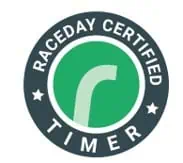We’re excited to share something new for 2025 that will make planning your race with Run the East even easier!
Planning a race involves so many moving parts, and we know how easy it can be for tasks to slip through the cracks. That’s why we’ve created the Race Ready Roadmap—a streamlined communication process to keep you organized, informed, and confident as race day approaches.
Here’s how it works:
- Comprehensive Planning Spreadsheet: As soon as you first book your race with us, we’ll send you a custom spreadsheet that lists out the key steps you’ll need to take throughout the race planning process.
- Regular Updates and Reminders: We’ll send you reminders and planning tips at key intervals leading up to your race. These will arrive at strategic times (120, 90, 60, 30 days before the race, and more) to guide you step-by-step through the planning process.
- Actionable Checklists: Each reminder will include a checklist of tasks relevant to that stage of planning, helping you prioritize what needs to be done.
- Support When You Need It: Coming Soon… we’ll be adding in additional resources and tips related to the tasks that we send out—and if you ever need extra help, you can reach out to us directly for one-on-one support.
We’ve designed the Race Ready Roadmap to take the stress out of planning and ensure no detail is overlooked. Whether you’re organizing your first race or your fiftieth, this process will help you stay on track for success!
Please remember: The Race Ready Roadmap is designed to assist you with planning your race by providing reminders, tips, and resources at key intervals. However, it is not an exhaustive guide to race planning, and the final responsibility for all event details lies with the race organizer. If you have any questions or concerns about your specific race needs, please reach out to us for additional guidance.
Race Planning Tip:
Test Your Course:
Run, walk, or bike the race course to experience it from a participant’s perspective. This hands-on approach helps you spot potential challenges like uneven terrain, blind turns, or areas that need extra signage or volunteers. You simply cannot get this perspective from riding in a car, or online mapping tools. Even if you’ve used the same course for years, things along the course still may have changed, so it’s worth doing every time! Pay attention to the following:
- Safety Concerns: Identify and address hazards like potholes, slippery surfaces, or narrow paths. If you notice any potential safety issues, flag them for correction or adjustment.
- Signage and Markings: Look for areas where participants might get confused, such as intersections or turns. Plan to use clear directional signs and assign volunteers to guide runners at key points. We recommend that EVERY turn is marked with a sign and a volunteer.
- Accessibility: Ensure the course is easy to navigate for all participants, including walkers, runners, and those with strollers or wheelchairs (if applicable).
- Logistical Considerations: Identify spots where aid stations, water stops, or mile markers should be placed. Consider the flow of participants and where support will be most needed. Be sure to document this on a map that you can share with your race day volunteer team.
Testing the course early and again closer to race day ensures you’re prepared for any surprises and provides the best experience for your participants!



